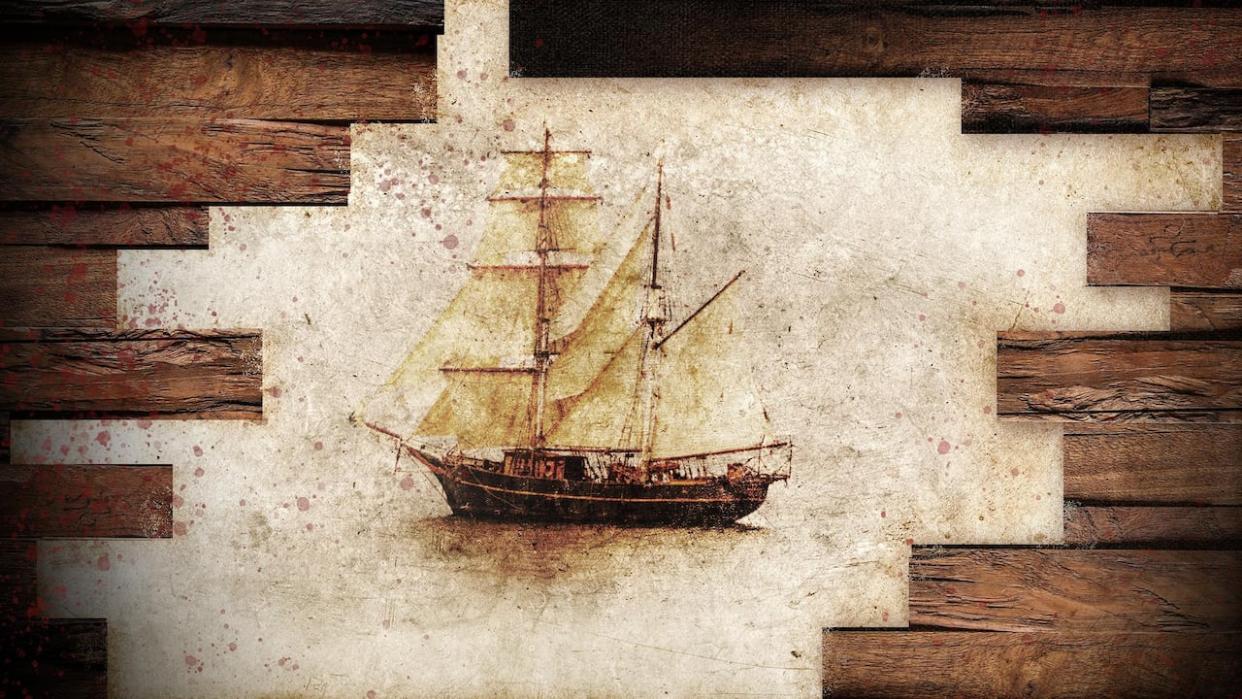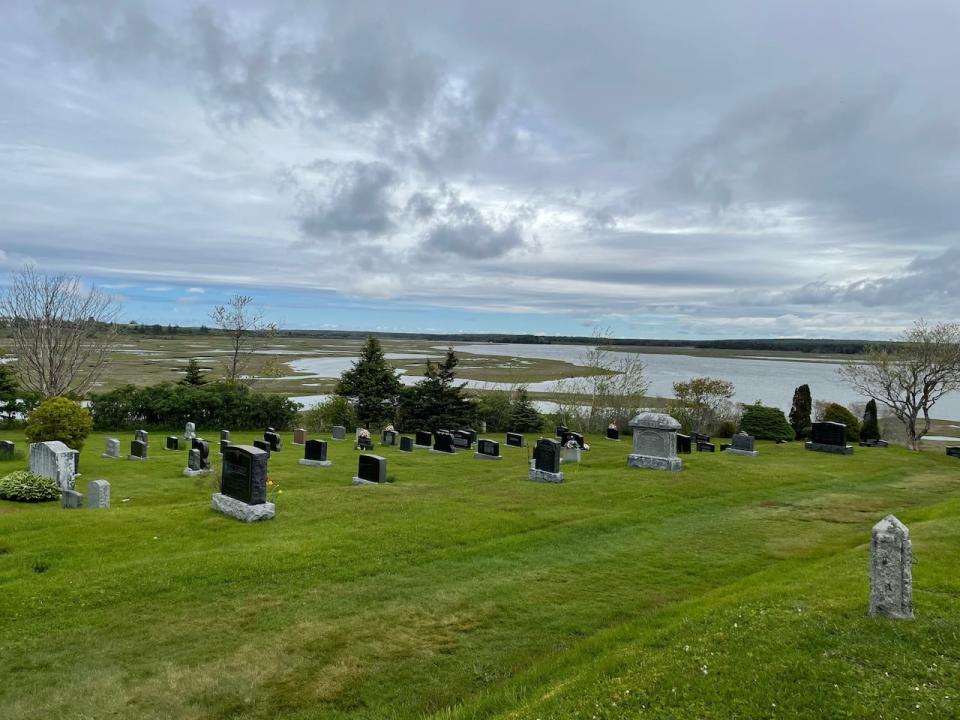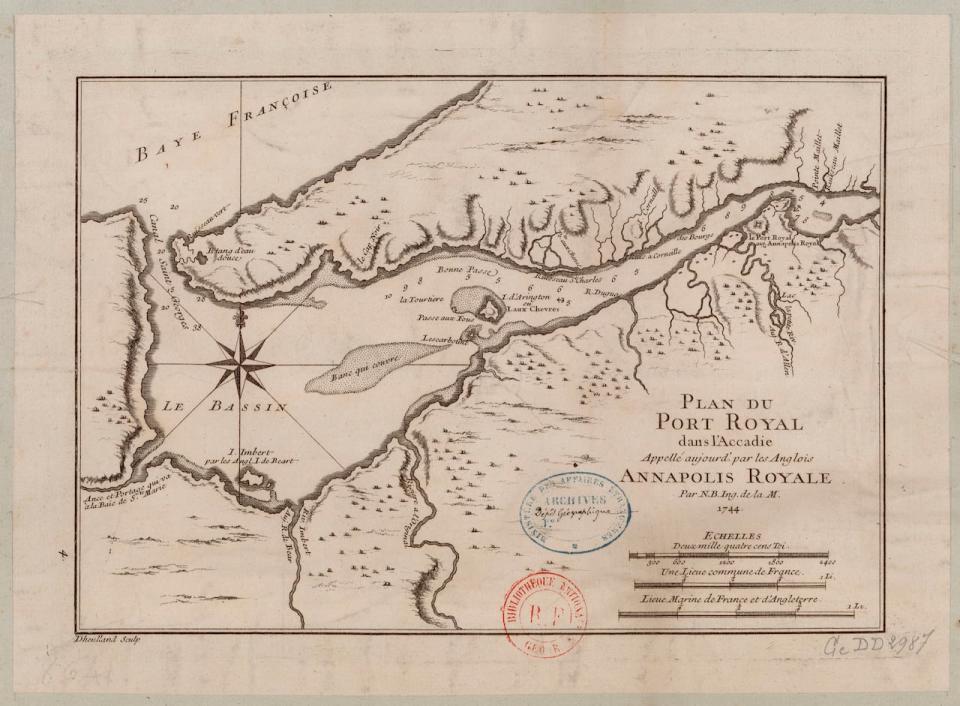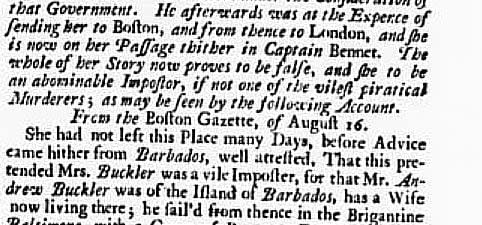The death ship of Chebogue — Nova Scotia's 300-year-old murder mystery

- Oops!Something went wrong.Please try again later.
In December 1735, a ship with decks covered in blood sailed into Chebogue, in present-day Yarmouth County, N.S., and dropped anchor.
It was the brigantine Baltimore and the story of what happened on board remains shrouded in mystery to this day.
The Acadians who lived in the area of southwestern Nova Scotia were puzzled by the unexpected visitor. After several days seeing no signs of life they investigated and discovered the grisly scene.
As they made their way through the blood-soaked decks it was obvious the ship had been ransacked and not a soul remained on board.
Not long after this discovery, members of a local Indigenous group, described in documents of the time as Cape Sable Indians, handed over a woman they said was from the ship to local resident Charles D'Entremont.
In the mid 1700s, neither the Acadians nor the Indigenous population were happy with their new British overlords and relations between the two groups were relatively harmonious.
Some later accounts say the woman was found barricaded in the captain's cabin when local residents boarded, but this is not supported by official documents at the time.
The woman said she was Susannah Buckler, the wife of the ship's captain Andrew Buckler.
According to an entry in the 1736 edition of the Virginia Gazette, the woman said they had come ashore to gather fresh water but found only snow which they melted and put in barrels.
Two servants were sent ashore with the ship's boat to wash dirty linens but they never returned, the story said.
"They imagin'd them to be cut off by the Indians," the story reported.
"They were left destitute of a boat, and oblig'd to tarry on board; that at length the owner, and every one else on board (this woman excepted) perish'd for want of water; that the Indians then came on board and rifled the vessel."

A present-day view of the Chebogue River feeding into the harbour as seen from the Town Point Cemetery. The cemetery was established in 1766. (Vernon Ramesar/CBC)
The woman did not explain why a crew dying of thirst would not have simply run the ship aground to get back to shore.
Buckler also accused local Indigenous people of stealing valuables, a tale believed by Acadian neighbours while she stayed in the Pubnico area, then known as Pubomcoup.
She eventually came to the attention of George Mitchell, a deputy surveyor, who sent a message to Lawrence Armstrong, the lieutenant governor of Nova Scotia.
Hearing in Annapolis Royal
Armstrong ordered the woman and the ship to be brought to Annapolis Royal for an inquiry to be conducted.
The ship, D'Entremont, Mitchell and the woman arrived in Annapolis Royal in the summer of 1736.
After hearing the woman's claims, Armstrong wrote to the local chief asking for an explanation. He answered that his people had nothing to do with the plundering of the ship.
D'Entremont testified that local Indigenous witnesses told him they had found eight people dead and naked on the shore, one of whom was a pregnant woman.
By this time, the woman's tale was beginning to unravel and some elements of her claims were in direct contradiction to what she had previously said.
She was also becoming increasingly vague about her knowledge of her supposed husband's finances.
"She excused herself from having a general knowledge of her husband's affairs [and] gave such answers as could not be contradicted," the council minutes said.

A map showing Annapolis Royal in 1744, shortly after the Baltimore was brought there from Chebogue harbour. (Wikimedia Commons)
Whatever doubts there may have been about the veracity of her tale of woe, Armstrong, according to the Virginia Gazette, received and entertained her for a "considerable time."
He organized for her to be sent to Boston in order to get passage on the Captain Bennet sailing to London.
Mere days after her departure from Annapolis Royal, a letter from Barbados arrived.
Letter from Mary Buckler
It was from Mary Buckler, who said she was, in fact, the captain's wife and her husband and his crew had been transporting convicts from Dublin, Ireland, to Maryland.
She said she had heard of the incident and she believed the prisoners had murdered her husband and the other crew members and that the woman pretending to be her was one of the prisoners.
With its jails overflowing at the time, it was a fairly common practice to transport prisoners to Britain's colonies in the Americas.
The realization that he had been duped came too late for Armstrong to take action because the imposter Buckler had already departed.
The woman claiming to be Susannah Buckler was never heard of again.

Excerpt from the Virginia Gazette of 1736 . (Rockefeller Library Collection/Colonial Williamsburg)
Writing to the Council of Trade and Plantations on Nov. 23, 1736, Armstrong reported that it is supposed that the 60 or 70 convicts on the ship turned on the captain and crew and "committed a most barbarous massacre."
He said it was presumed that they took the ship into the little-used harbour where they all perished. He noted that no one knew how they died except, perhaps, the woman claiming to be Buckler who was "deep involved in the guilt."
Subsequent inquiries discovered that the woman may have been a Miss Matthews who had been sentenced to death for theft and was a prostitute in Dublin, according to the Virginia Gazette.
Viewed as cursed, the brigantine Baltimore stayed unclaimed in the harbour at Annapolis Royal until she was towed further out to sea and burned in 1743, according to the Nova Scotia marine heritage database.
Shawn Smallman, a historian and professor of international studies Portland State University in Oregon, was fascinated by the story of the Baltimore after reading about it in Roland Sherwood's book Haunting Tales from Atlantic Canada.

Shawn Smallman is a historian and professor of international studies at Portland State University who is originally from Ontario. (Ryan Flood/Portland State University)
He wrote an extensive blog post about the incident in 2018 in time for Halloween called the The Mystery Woman of the Baltimore.
Smallman, a dual citizen who grew up in Ontario, said the story is made more interesting because of all the questions that are still unanswered.
He said mystery surrounds what happened to all the other people and why, if some of the convicts escaped, they left the woman behind. He said some reports suggest that some of the escaped convicts made their way to Massachusetts where they were arrested and tried but he has found no hard evidence of this.
"This story to me has a lot of different layers," he said.
"Even if tomorrow we were to get into the archives in Massachusetts, and if one of the convicts was to tell a version of the story, there's still a lot of mysteries that would be left, including what happened to that woman who called herself Susannah Buckler."
MORE TOP STORIES

